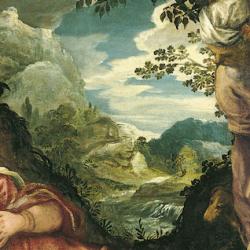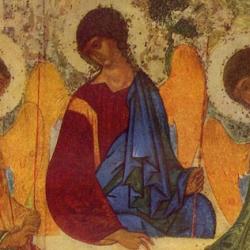Jesus’ declaration to the prostrate John (Revelation 1:17-18a) is a neat little, rich little chiasm:
A. I am (ego eimi)
B. First
C. Last
D. Living One
C’. Became dead
B’. Behold! Alive
A’. I am (eimi) to ages of ages
Several observations: First, the whole statement is surrounded by the Hellenistic equivalent of Yahweh – “I am.” The internal assertions unpack the meaning of the I am. If this is so, then, second, “I am” is not a claim to eternal, timeless duration but rather the utter liveliness that overcomes all death. When Yahweh identifies Himself as such, and when Jesus identifies with Yahweh, He is not claiming to be “Being”; He is claiming to be the One who overcomes death. This is what makes Jesus “Living One” – not because He is always alive but because He overcomes death.
Third, He is not the living one “forever”; He is the living one “to ages of ages,” the one who lives through all ages and unifies them as the Lord of all ages, not a man filled with the spirit of an age but the One who has the seven Spirits of all time.
Finally, the reversal of first-last in the second part of the chiasm is crucial. First to last is the way we live, from first breath to last, from birth to death. But Jesus is the Living One who inverts the order of life and death. He became dead, reached the “last” things. But “behold!” (idou) the last things were not last, and because Jesus “became dead and behold! lives” so does John. There is an open door at the back side of the grave because Jesus has the “keys of death and Hades.”











